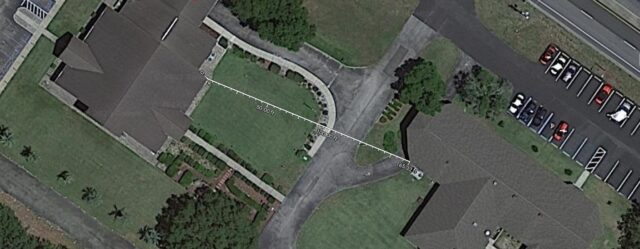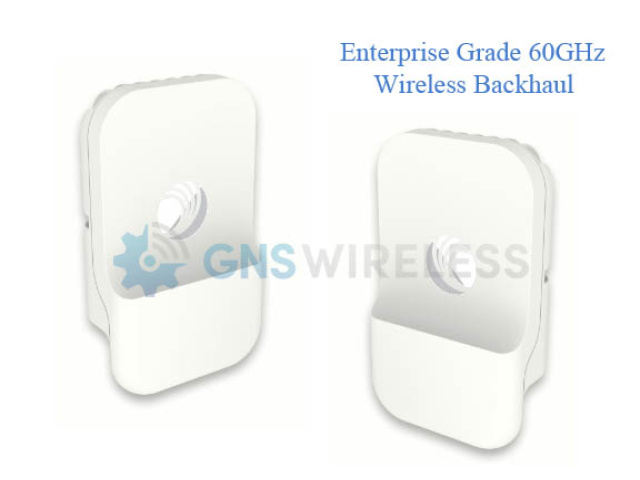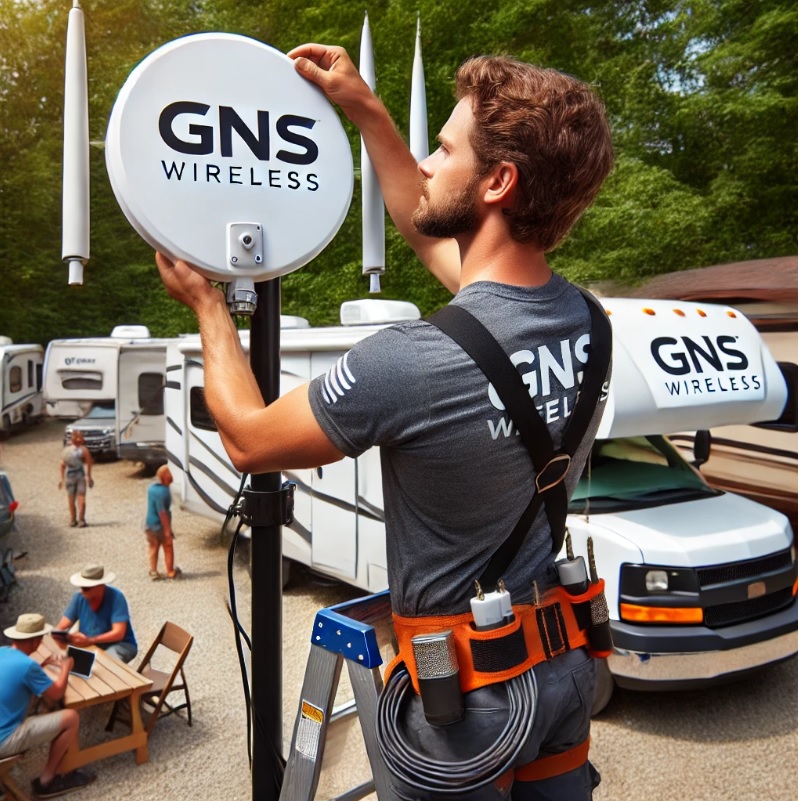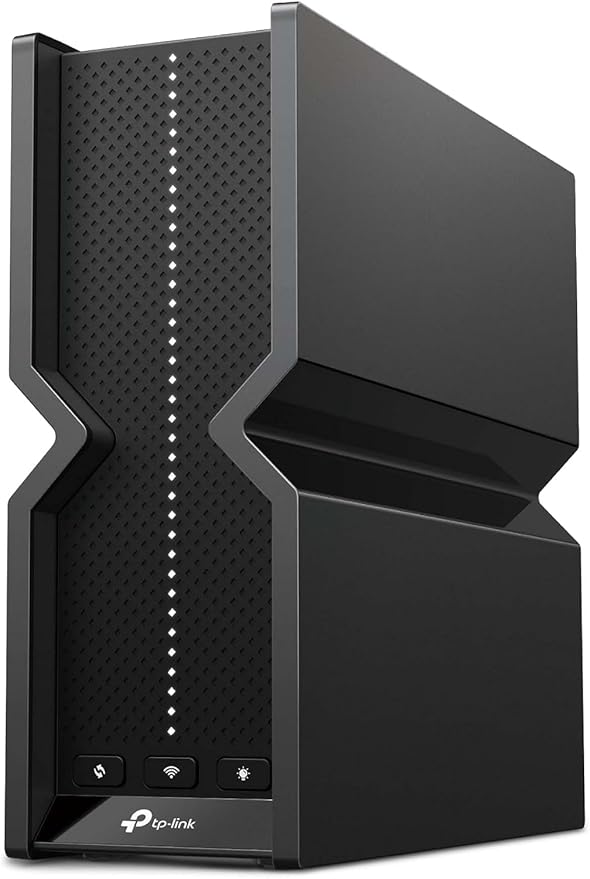In today’s fast-paced, always-connected world, businesses need rugged, high-performance wireless solutions that deliver speed, security, and reliability—especially in challenging outdoor and industrial environments. The Cisco Meraki MR86 is a cloud-managed, Wi-Fi 6 access point (AP) designed to withstand harsh conditions while providing seamless connectivity.
Whether you’re deploying Wi-Fi in warehouses, manufacturing plants, stadiums, or outdoor campuses, the MR86 is built to deliver superior performance while simplifying network management through the Meraki cloud dashboard.
Why Choose the Cisco Meraki MR86?
The MR86 is engineered to provide cutting-edge Wi-Fi 6 performance, boasting:
- Wi-Fi 6 (802.11ax) technology for higher efficiency and lower latency.
- 4×4 MU-MIMO with beamforming, ensuring fast, reliable connections for multiple devices.
- Rugged IP67-rated design, built to withstand dust, moisture, and extreme weather conditions.
- Dedicated security radio for WIDS/WIPS (Wireless Intrusion Detection/Prevention).
- Cloud-managed with full visibility through the Meraki Dashboard.
- Bluetooth Low Energy (BLE) radio for IoT and location-based services.
With speeds of up to 3.55 Gbps, this access point ensures seamless streaming, video conferencing, and IoT connectivity in even the most demanding environments.
Technical Specifications of the MR86
| Feature | Specification |
|---|---|
| Wi-Fi Standard | 802.11ax (Wi-Fi 6) |
| Max Data Rate | 3.55 Gbps |
| Radio Configuration | 4×4 MU-MIMO, dual-band |
| Antenna Ports | 4 external (N-type connectors) |
| Ruggedness | IP67-rated (dust/waterproof) |
| Power Options | PoE+ (802.3at) or DC |
| Security | WPA3, 802.1X, WIDS/WIPS |
| Cloud Management | Yes (via Meraki Dashboard) |
Best Practices for Deploying the MR86
To maximize performance, follow these best practices when installing the Cisco MR86:
1️⃣ Conduct a Site Survey First
A wireless site survey helps determine the ideal placement of your MR86 units. This is especially critical in environments like warehouses or stadiums, where physical obstructions and interference impact coverage.
2️⃣ Choose the Right Antennas
The MR86 supports external antennas, allowing you to optimize coverage patterns based on your deployment area. Choose omnidirectional antennas for open spaces and directional antennas for focused coverage.
3️⃣ Optimize Network Settings
- Enable Band Steering to prioritize 5GHz connections.
- Use RF Profiles to minimize interference.
- Set VLANs for traffic segmentation, improving security.
4️⃣ Regularly Update Firmware
Since the MR86 is cloud-managed, updates are deployed automatically. However, review and apply updates strategically to minimize downtime.
5️⃣ Monitor and Optimize Performance
Use the Meraki Dashboard to track:
- Real-time analytics (bandwidth usage, client load).
- RF Spectrum analysis (identify interference sources).
- Security threats (intrusion detection, rogue APs).
Why Choose GNS Wireless for Your MR86 Deployment?
At GNS Wireless, we specialize in sales, configuration, and deployment of Cisco Meraki networking solutions. Whether you need expert guidance, programming support, or full installation, we ensure your MR86 deployment is seamless and optimized for performance.
💡 How We Help:
- Competitive Pricing on Cisco Meraki hardware.
- Custom Network Design & Programming tailored to your environment.
- On-Site & Remote Installation Services for seamless deployment.
📞 Need help with your MR86 setup? Contact GNS Wireless today for expert guidance!
Conclusion: Is the Cisco MR86 Right for You?
The Cisco Meraki MR86 is a powerful, Wi-Fi 6-ready access point designed for outdoor and industrial deployments. With its rugged build, advanced security, and cloud management, it’s ideal for businesses needing high-speed, reliable wireless in challenging environments.
Ready to upgrade your network?
🔹 Contact GNS Wireless for expert assistance in purchasing, programming, and installing your Cisco MR86 today!
A campground should be a place to relax, but in today’s world, reliable internet is a necessity. When a campground owner came to GNS Wireless after struggling with a network of Ubiquiti routers that couldn’t keep up with demand, we knew they needed a more powerful solution—one that could deliver stronger signals, wider coverage, and better reliability without exceeding their budget.
The Challenge: Inconsistent and Weak WiFi Coverage
The campground had installed several Ubiquiti routers, then tried the Engenius outdoor units, but guests constantly complained about slow speeds, dead zones, and unreliable connections. With an increasing number of visitors streaming content, working remotely, and using smart devices, their existing setup simply wasn’t cutting it. The owner needed a commercial-grade solution that was just as affordable but far more effective.
The Solution: 802.11AX for Superior Performance
After evaluating their needs, we recommended our 802.11AX mesh APs, a powerful outdoor WiFi solution that offers:
-
Stronger Signal Penetration: Advanced antennas provide a more robust and far-reaching WiFi signal, eliminating dead zones across the campground.
-
Cloud-Based Management: Easy-to-use remote monitoring and control allows the owner to manage the network effortlessly.
-
Higher Device Capacity: Supports more simultaneous connections without slowdowns, perfect for a busy campground.
-
Weatherproof Durability: Designed for outdoor environments, ensuring reliable operation in all conditions.
The Deployment: Seamless Installation & Instant Results
Our team worked closely with the campground owner to deploy 802.11AX strategically across the site. The installation process included:
-
Site Assessment: Identifying coverage gaps and optimal mounting locations.
-
Installation of 802.11AX Units: Placing high-performance units in key areas for maximum coverage.
-
Network Optimization: Configuring cloud management settings for remote monitoring and load balancing to ensure smooth performance.
-
Testing & Fine-Tuning: Conducting speed tests and adjusting placements for the best results.
The Result: Fast, Reliable, and Worry-Free WiFi
With the new commercial-grade WiFi solution in place, guests now enjoy strong, uninterrupted connectivity throughout the campground. The owner no longer deals with constant complaints, and their investment in 802.11AX has provided a massive improvement in performance at the same price range as their previous system.
Why GNS Wireless?
GNS Wireless delivered a cost-effective yet powerful solution that transformed the campground’s connectivity. Our expertise in commercial-grade wireless networks ensures that businesses, campgrounds, and outdoor spaces get the best performance without unnecessary costs.
Additionally, GNS Wireless provides U.S.-based technical support with real-world installation experience. When you call us, you speak with knowledgeable professionals who understand the challenges of deploying wireless networks in outdoor environments. No overseas call centers—just real experts ready to help you find the best solution for your needs.
Do you need dual-band coverage that can do 2.4 and 5 GHz down long rows of RVs, including covered sites? We can help!
Struggling with weak WiFi? Contact GNS Wireless today to find the perfect solution for your outdoor network needs! (877) 209-5152
Is your RV park struggling with slow, unreliable WiFi? Have your guests been complaining about dropped connections and buffering issues? If your current wireless solution is no longer keeping up with demand, it’s time to upgrade. GNS Wireless specializes in high-performance WiFi solutions for RV parks, campgrounds, and outdoor venues, ensuring seamless connectivity for all your guests.
Outdoor Wireless Network Setup for Campgrounds
At GNS Wireless, we provide expert solutions for setting up outdoor wireless networks that can handle high traffic and extreme weather conditions. Whether you manage a small campground or a large RV park, our weatherproof, high-speed WiFi solutions ensure that guests stay connected without interruptions.
Key Features of Our WiFi Solutions
1. Weatherproof Equipment for Any Environment
-
Our access points are 100% weatherproof, ensuring they perform optimally in all conditions, from heavy rain to extreme heat.
-
If mounting on a pole, we provide weatherproof enclosures to protect PoE and power supplies, adding an extra layer of durability to your setup.
2. Easy Installation with Mounting Hardware Included
-
No need to source additional brackets or mounting solutions. Our equipment comes with all necessary mounting hardware for easy and secure installation.
3. Scalable Solutions for Small and Large Parks
-
Whether you need a network to support 100 devices or a more robust system for 1,000+ simultaneous connections, we have a solution that fits.
-
Our solutions can handle speeds ranging from 100 Mbps to 3 Gbps, ensuring smooth streaming, gaming, and remote work for your guests.
4. High-Speed Internet for Large RV Parks
-
We specialize in delivering enterprise-grade WiFi for large campgrounds and RV resorts, ensuring seamless connectivity for hundreds of guests at once.
-
Our systems support advanced bandwidth management to prioritize streaming, video calls, and online gaming without network congestion.
5. Industry-Leading Warranty & Support
-
Our products come with warranties ranging from 1 to 3 years, depending on the specific solution you choose.
-
Warranties cover manufacturing defects and performance issues, ensuring you have peace of mind with your investment.
6. Professional Support & Installation Assistance
-
Not sure what setup is best for your property? Our expert team will guide you through every step, from selecting the right equipment to installation and ongoing support.
-
Need to see real-world examples? Contact our sales or support team for pictures of past installations.
What Our Customers Are Saying
“GNS Wireless transformed our campground’s internet! Our guests can now stream movies, work remotely, and stay connected without frustration. The installation was seamless, and the customer support was top-notch.” – Sarah M., RV Park Owner
“Before upgrading with GNS Wireless, our WiFi barely worked beyond the main office. Now, we have strong, reliable coverage across the entire property. The weatherproof enclosures have held up against storms, and our guests couldn’t be happier.” – Tom L., Campground Manager
“We run a large RV resort, and handling 500+ guests online at the same time used to be a nightmare. With GNS Wireless, we now have a high-speed solution that meets our needs. Highly recommend!” – David R., Resort Operator
Benefits of Upgrading Your RV Park WiFi
1. Attract More Guests
Reliable WiFi is a must-have for today’s travelers. RVers and campers expect to stay connected for work, entertainment, and communication. Offering high-speed, stable WiFi can make your park a preferred destination.
2. Increase Guest Satisfaction & Positive Reviews
Nothing frustrates guests more than slow or unreliable internet. With a high-performance WiFi network, you’ll improve guest satisfaction, leading to better reviews and increased bookings.
3. Future-Proof Your Network
As demand for streaming services, remote work, and online gaming increases, ensuring your park’s WiFi is equipped to handle growing bandwidth requirements is essential. Our scalable solutions grow with your needs.
Learn More About Our WiFi Solutions
For more details on our RV Park WiFi Solutions, check out our RV Park WiFi Installation Guide and explore our range of Weatherproof Enclosures to protect your networking equipment.
Ready to Upgrade? Contact GNS Wireless Today!
If your RV park, campground, or outdoor venue is ready for a reliable, high-speed, and scalable WiFi solution, GNS Wireless has the expertise and technology to meet your needs. Contact us today to discuss your requirements, get a customized quote, and take the first step toward upgrading your wireless network.
Phone: 877-209-5152
Email: support@gnswireless.com
Why Use a Point-to-Point Wireless Bridge?
In an era where connectivity is king, a Point-to-Point (PtP) Wireless Bridge is the ultimate solution for extending networks over long distances without the hassle of running cables. Whether you’re linking two buildings, extending your network to a remote security camera, or delivering internet to an offsite facility, a PtP bridge ensures a stable, high-speed wireless connection over miles.
At GNS Wireless, we specialize in providing robust, high-performance PtP wireless solutions. In this guide, we’ll walk you through everything you need to know—from choosing the right equipment to setting up your bridge like a pro.
Real-World Example: How a Construction Company Eliminated Expensive Cabling Costs
Customer Story: Jackson & Sons Construction, a mid-sized construction company in Texas, needed high-speed internet connectivity between their main office and a remote job site half a mile away. Running fiber would have cost over $10,000, but a PtP wireless bridge setup with GNS Wireless high-performance bridges cost them under $1,800 and was installed in a single day.
“The wireless bridge was a game-changer for us,” says Tom Jackson, IT Manager. “We got seamless connectivity without breaking the bank. The speeds are as good as a wired connection!”
Step-by-Step Guide to Setting Up Your Wireless Bridge
1. Choose the Right Equipment
Selecting the right PtP bridge depends on factors like distance, bandwidth needs, and environmental conditions. Here are our top recommendations:
-
Short-Range (Up to 1 Mile): GNS Wireless 5 GHz PtP Wireless Bridge (GNS-1153AC)
-
Mid-Range (1-5 Miles): GNS Wireless 5.8 GHz High-Speed Bridge (GNS-1155AC)
-
Long-Range (5+ Miles): GNS Wireless Long-Distance Gigabit Bridge (GNS-5423-HD)
Each unit features weatherproof enclosures (NEMA-rated) to withstand harsh outdoor conditions.
2. Mount and Align Your Antennas
-
Place your antennas on stable mounting poles or rooftops.
-
Ensure clear line-of-sight (LOS) between the two locations (no trees, buildings, or obstacles).
-
Use a laser level or smartphone apps to achieve precise alignment. Google Earth also comes in handy when finding a point of reference for aiming.
3. Configure Your Wireless Bridge
- Although most of our packages ship pre-configured, configuration can be easily adjusted.
-
Connect the bridge units to a PoE (Power over Ethernet) injector and plug into your network.
-
Access the web-based UI using a computer.
-
Set one unit as the Access Point (AP) and the other as the Station (Client).
-
Configure SSID, encryption (WPA2), and channel settings to avoid interference.
4. Test and Optimize the Connection
-
Run a speed test to ensure maximum throughput.
-
Adjust the antennas if necessary to improve signal strength.
-
Enable QoS (Quality of Service) for bandwidth prioritization.
Common Troubleshooting Tips
-
Weak Signal? Ensure antennas are properly aligned and free from obstructions.
-
Slow Speeds? Change the wireless channel to avoid interference from nearby networks.
-
Connection Drops? Check power supply and PoE injectors; upgrade to a higher-gain antenna if needed.
Why Buy from GNS Wireless?
-
Expert Support – Our team helps you pick the right wireless bridge for your application.
-
Pre-Configured Units – Order from us, and we’ll pre-configure your devices for plug-and-play installation…no additional charge.
-
High-Quality, Weatherproof Equipment – We only carry trusted, field-tested solutions.
Ready to eliminate cables and extend your network seamlessly?
📞 Call us today at 877-209-5152
In today’s fast-paced business world, connectivity is king. When our company expanded into a second building across the street, we needed a reliable, high-speed network connection between both locations. Running fiber would have been costly and time-consuming, so we turned to GNS Wireless for a commercial-grade point-to-point (PTP) wireless bridge. The solution? The Cambium Networks PTP550 Integrated Link.
The Challenge: Connecting Two Buildings Without Fiber
The primary office housed the servers, while the new location required seamless access to our internal network, VoIP system, and security cameras. With over 1000 feet between buildings and no direct underground conduit, laying fiber would have meant months of permitting and excessive costs. Instead, we needed a wireless solution that could provide high throughput, low latency, and rock-solid reliability.
The Solution: Cambium Networks PTP550 from GNS Wireless
After consulting with the experts at GNS Wireless, we opted for the Cambium Networks PTP550 Integrated Link. This dual-band 5 GHz point-to-point wireless bridge offered up to 1.36 Gbps of throughput with dynamic channel selection, ensuring minimal interference and maximum performance.
Key Features of the PTP550:
-
High Speed & Low Latency: With its dual-radio setup and gigabit speeds, we could run all business-critical applications without a hitch.
-
Dynamic Spectrum Optimization: The system automatically selects the best channels, avoiding interference in the crowded 5 GHz band.
-
Weatherproof & Durable: The rugged IP66-rated enclosure meant we didn’t have to worry about harsh weather conditions.
-
Easy Deployment: With guidance from GNS Wireless, installation was straightforward, with mounting options that provided precise alignment.
The Deployment: Quick, Simple, and Effective
Our team followed a structured approach for deployment:
-
Mounting the Units: We placed one PTP550 unit on each building’s rooftop, ensuring a clear line of sight.
-
Alignment & Calibration: Using the Cambium alignment tools, we fine-tuned the antennas for optimal signal strength.
-
Integration with Our Network: The wireless bridge was seamlessly connected to our existing infrastructure, with VLAN support ensuring smooth traffic segregation.
-
Testing & Optimization: Within minutes, we had a stable, high-speed link that exceeded our expectations.
The Result: A Rock-Solid Wireless Link
The PTP550 solution provided by GNS Wireless delivered beyond what we anticipated. Our secondary building now enjoys the same ultra-fast connectivity as our main office, with no noticeable lag or performance drops. Video calls, large file transfers, and security feeds all operate flawlessly, proving that a high-quality wireless bridge can be just as effective as a fiber connection—without the excessive cost and installation time.
Why Choose GNS Wireless?
GNS Wireless made the entire process seamless, from product selection to post-installation support. Their expertise in wireless networking ensured we got the right equipment for our needs, and their guidance made setup a breeze. If you’re looking to bridge two locations without the hassle of fiber, the PTP550 from GNS Wireless is a game-changer.
Looking to connect your buildings wirelessly? Check out the PTP550 at GNS Wireless and experience the future of commercial-grade networking today!
In today’s digital-driven world, campers expect seamless, high-speed internet no matter where they park their RV or pitch their tent. Standard Wi-Fi setups often struggle to cover large areas efficiently, leaving guests frustrated with slow speeds and dead zones. That’s where Mesh Wi-Fi for campgrounds comes into play—providing a reliable, scalable solution for expansive outdoor environments.
What is Mesh Wi-Fi?
Mesh Wi-Fi is an advanced networking system that uses multiple interconnected access points to distribute a strong, uninterrupted signal across large areas. Instead of relying on a single router, a Mesh Wi-Fi system ensures that every corner of your campground, from remote sites to common areas, is covered with fast, reliable Wi-Fi.
Real-World Success: A Campground Wi-Fi Transformation
A popular RV park in the Midwest struggled with Wi-Fi dead zones, frustrating campers who relied on stable internet. GNS Wireless designed a custom Mesh Wi-Fi system, utilizing commercial-grade access points and point-to-point bridges to overcome dense tree coverage. The result? ✅ 80% faster speeds across the campground ✅ 100% guest satisfaction increase based on post-installation surveys ✅ Seamless video streaming and remote work capability for campers
Success Story: Managing Bandwidth for a Large Campground
A campground owner with over 200 sites and Starlink internet faced constant issues with certain guests consuming all available bandwidth, leading to slow speeds for others. GNS Wireless provided a cloud-based router with advanced bandwidth management, ensuring fair usage and preventing any single user from hogging the speed. The outcome? ✅ Smooth and fair internet access for all guests ✅ Optimized Starlink performance with load balancing ✅ Improved guest satisfaction and fewer complaints about slow speeds
Why Mesh Wi-Fi is the Best Solution for Campgrounds
Traditional routers often struggle to penetrate dense foliage, buildings, and large open spaces. A Mesh Wi-Fi network eliminates these challenges by intelligently routing traffic through multiple nodes, ensuring seamless handoffs and eliminating dead zones. Here’s why GNS Wireless recommends Mesh Wi-Fi for RV parks and campgrounds:
✅ Full Coverage Across Your Campground – No more weak spots! Each mesh node extends coverage, delivering strong Wi-Fi signals to campsites, cabins, and recreation areas.
✅ Self-Healing Network – If one access point goes down, the system automatically reroutes traffic, keeping your network operational without disruptions.
✅ Handles High User Traffic – Designed for large-scale outdoor Wi-Fi, mesh systems efficiently manage multiple devices streaming, gaming, and video conferencing simultaneously.
✅ Easy Scalability – As your campground grows, simply add more access points to expand coverage effortlessly without reconfiguring the entire network.
✅ Seamless Roaming for Guests – Unlike traditional setups, Mesh Wi-Fi allows campers to move freely without losing connection as they transition between access points.
✅ Point-to-Point (PTP) Wireless Bridges – For campgrounds with dense tree coverage or challenging layouts, PTP wireless bridges can be used to connect multiple access points, extending the Mesh Wi-Fi network and ensuring seamless connectivity for campers moving throughout the park.
Mesh Wi-Fi vs. Traditional Wi-Fi: A Quick Comparison
| Feature | Traditional Wi-Fi | Mesh Wi-Fi |
|---|---|---|
| Coverage | Limited range, weak in remote areas | Full campground coverage |
| Network Stability | Single point of failure | Self-healing, multi-node setup |
| Scalability | Requires reconfiguration | Easily expandable |
| Guest Experience | Frequent disconnections | Seamless roaming |
GNS Wireless: Your Trusted Partner for Campground Wi-Fi Solutions
At GNS Wireless, we specialize in custom campground Wi-Fi solutions tailored to your specific needs. Our approach includes:
-
Professional-grade commercial equipment – Unlike consumer-grade routers, we use high-performance outdoor access points designed for long-range connectivity.
-
Cloud-managed systems – Monitor and manage your network from anywhere, with real-time analytics and troubleshooting features.
-
Point-to-Point Wireless Bridges – Ideal for overcoming natural obstacles like trees, linking multiple repeaters to expand coverage.
-
Custom Heat Map Analysis – We map your campground to determine the best placement for access points, ensuring optimal coverage and performance.
Guest Testimonial
“Before upgrading our wireless network to a Mesh type system, our campground guests constantly complained about slow internet. Since working with GNS Wireless, we’ve received nothing but positive feedback. They fixed our backhauls. They tuned our access points and can now manage our network remotely. Campers can now stream, work remotely, and stay connected anywhere on our property. The best part? No more complaints at check-in!” – Michael R., Campground Owner
Overcoming Tree Coverage Challenges
“We run a large wooded campground, and our biggest issue was trees blocking our signal, causing major connectivity problems. GNS Wireless provided a tailored solution using point-to-point bridges and mesh networking to ensure all areas of our park had fast, reliable Wi-Fi. The difference has been night and day—campers are thrilled, and we no longer have complaints about internet access.” – David L., Park Owner
Why Choose GNS Wireless Over Competitors?
🚫 No Setup Fees or Maintenance Fees – Unlike other providers, we don’t lock you into costly, unnecessary service fees. Our solutions are built to last without hidden costs.
📡 Multiple Vendor Access Points – We don’t believe in a one-size-fits-all approach. We work with leading brands to ensure you get the best Mesh Wi-Fi solution tailored to your specific campground layout.
🔧 In-House Installations Available in Long Island, NY – Need on-site installation? Our expert technicians are available for professional setups, ensuring optimal performance.
Ready to Upgrade Your Campground Wi-Fi?
📞 Call GNS Wireless today at (877) 209-5152 for a free consultation and let us design a Mesh Wi-Fi network that meets your campground’s unique demands.
🌍 Visit GNSWireless.com to explore our solutions and get started!
🚀 Upgrade your campground with fast, reliable Mesh Wi-Fi and keep your guests connected!
When expanding your business into a new warehouse or facility, network connectivity is critical. But what happens when running fiber is not an option? The GNS-5462 Wireless Bridge delivers fiber-like speeds without the need for costly trenching or excavation. Perfect for aeronautical companies, industrial sites, and large campuses, this multi-gigabit point-to-point solution ensures a seamless connection between buildings up to 1,000 feet apart.
The Challenge: Expanding Without Running Fiber
A leading aeronautical company needed to expand its operations into a warehouse 500-1,000 feet away. With over 50 employees relying on high-speed data access, fiber speeds were a necessity. However, excavation to lay fiber was not feasible due to reinforced concrete and existing infrastructure constraints.
The solution? The GNS-5462 Multi-Gigabit Wireless Bridge – a high-performance, secure, and scalable alternative to traditional fiber installations.
Key Benefits of the GNS-5462 Wireless Bridge
-
Fiber-Like Speeds Without Trenching – Achieve multi-gigabit speeds without the time and cost of running fiber.
-
Reliable Performance for 50+ Users – Supports high-bandwidth applications, VoIP, video conferencing, and large data transfers.
-
Secure & Interference-Free – Operating on a 60 GHz frequency band, it avoids congestion from traditional 2.4 GHz and 5 GHz networks.
-
Fast & Simple Deployment – Pre-configured for a plug-and-play installation, eliminating the need for complex networking setups.
-
Weather-Resistant & Industrial-Grade – Designed for 24/7 outdoor operation, making it perfect for airports, manufacturing plants, and industrial warehouses.
-
Low Latency & High Stability – Ensures smooth operation for mission-critical applications, reducing lag and downtime.
Technical Specifications of the GNS-5462
-
Wireless Standard: 802.11ay (Terragraph-certified)
-
Frequency Range: 57 – 66 GHz
-
Throughput: Up to 3.8 Gbps total capacity
-
Range: Up to 1,000 feet (line of sight)
-
Beamforming Technology: 10° horizontal / 10° vertical auto-alignment
-
Power Input: 802.3at PoE (Power over Ethernet)
-
Weatherproof Rating: IP67-rated for harsh environments
-
Mounting Options: Pole or wall-mounted for flexible installation
-
Network Management: Supports cloud-based and on-premises monitoring solutions
-
Encryption & Security: Advanced encryption ensures secure data transmission between buildings
Real-World Installation Examples
Aerospace & Manufacturing – Expanding Operations Without Downtime
“Our facility expansion required fiber-speed connectivity in a building across the lot, but we couldn’t run fiber due to existing infrastructure. The GNS-5462 Wireless Bridge provided a secure, high-speed connection for our engineers, maintenance teams, and production floor. Setup was completed in just a few hours, and it has been running flawlessly.” – Mike R., IT Director, Aerospace Manufacturing
Industrial Campuses – Connecting Remote Warehouses
“We added a new warehouse 800 feet away from our main network and needed a fiber alternative. The GNS-5462 delivered ultra-fast speeds, allowing seamless file sharing, security monitoring, and enterprise resource management across sites. No lag, no downtime – just pure speed!” – Dan L., Operations Manager, Industrial Supply Chain
Airports – Secure, High-Speed Connectivity for Hangars
“Our airport hangar needed a dedicated high-speed link for maintenance and operational staff. The GNS-5462 provided the multi-gigabit connectivity we needed, ensuring secure data access and communications without relying on slow or congested Wi-Fi networks.” – Sarah J., IT Engineer, Regional Airport
Why Choose GNS Wireless?
At GNS Wireless, we specialize in delivering high-performance wireless bridge solutions tailored for businesses that demand fiber-like speeds without fiber installation costs. Our expert team ensures you get the best network performance with customized solutions and professional support.
Key Features:
-
GNS-5462 Wireless Bridge for Fiber-Like Speeds
-
Best Alternative to Fiber for Industrial Sites & Warehouses
-
Multi-Gigabit Wireless LAN Extension for Expanding Businesses
-
60 GHz Wireless Bridge for Secure, Interference-Free Connectivity
-
Fast & Reliable Wireless Solution for Aerospace & Airports
Contact Us Today! 📞 Call us: 877-209-5152
📧 Email: support@gnswireless.com
🌐 Visit: gnswireless.com
Upgrade your network with the GNS-5462 Wireless Bridge – the ultimate solution for fiber-speed building-to-building connectivity without the hassle of running cables!
In today’s digital age, campers and RV travelers expect fast, reliable, and seamless internet access wherever they go. Whether they need to work remotely, stream entertainment, or stay connected with loved ones, high-quality campground Wi-Fi has become a necessity, not a luxury. If your campground or RV park is struggling with slow speeds, dead zones, or outdated equipment, GNS Wireless is here to help!
Why Upgrading Your Campground Wi-Fi is Essential
Campgrounds with poor Wi-Fi risk negative reviews, lost reservations, and frustrated guests. Investing in a commercial-grade Wi-Fi solution ensures that your visitors enjoy a smooth online experience, leading to increased guest satisfaction and repeat business. With more travelers requiring high-bandwidth connections, upgrading your network is a smart, future-proof decision.
The GNS Wireless Advantage
At GNS Wireless, we specialize in tailor-made Wi-Fi solutions designed specifically for campgrounds and RV parks. We go beyond basic networking to offer a fully customized approach, ensuring every part of your property is covered with strong, reliable Wi-Fi signals. Here’s how we stand out:
- Commercial-Grade Equipment Only – Unlike consumer-grade routers that struggle with multiple users, we use high-performance outdoor Wi-Fi solutions designed for large-scale environments.
- Free Configuration & Support – Our expert team pre-configures your equipment before shipping, making installation effortless. Plus, we provide ongoing support to keep your network running at peak performance.
- Cloud Management for Easy Control – Monitor and manage your Wi-Fi network remotely with cloud-based solutions that provide real-time insights and troubleshooting capabilities.
- Customized for Your Needs – Whether you need Wi-Fi expansion, a network upgrade, or a brand-new installation, our engineers design a solution tailored to your campground’s unique layout.
- No Setup Fees or Maintenance Fees – Unlike other providers, we do not charge unnecessary setup or maintenance fees. Our solutions are built to last, with no hidden costs, giving you the most cost-effective and high-performing Wi-Fi network possible.
- Multiple Vendor Access Points – We don’t believe in a one-size-fits-all approach. We work with multiple access point vendors to select the best equipment for your specific needs, ensuring optimal coverage and performance.
- Installations Available Direct from Our In-House Technicians – Our skilled technicians provide professional on-site installations to ensure your system is set up for maximum efficiency and reliability. We are located on Long Island NY, so typically, we are willing to travel anywhere in the Northeast for installations and repairs. For parks outside of this area, we will support you over the phone, using the cloud, or refer you to a qualified reseller in your area.
How GNS Wireless Enhances Your Wi-Fi Network
-
Custom Heat Map Analysis – We start by creating a custom heat map of your campground to determine the best placement and type of access points for optimal coverage.
-
Site Surveys & Planning – We assess your campground’s size, layout, and guest capacity to recommend the best Wi-Fi infrastructure.
-
High-Performance Access Points – Deploying commercial-grade outdoor Wi-Fi access points ensures strong coverage across campsites, cabins, and common areas.
-
Mesh Networks & Point-to-Point Solutions – Extend Wi-Fi coverage seamlessly, eliminating dead zones and ensuring fast, consistent speeds.
-
Secure Guest Wi-Fi Access – Provide secure, password-protected Wi-Fi while keeping your internal network safe from unauthorized users.
-
Scalability for Future Growth – Our systems are designed to expand as your campground grows, accommodating more guests and devices without compromising performance.
-
Overcoming Natural Obstacles – Trees and dense foliage can block Wi-Fi signals, reducing coverage and speed. To solve this, we use point-to-point wireless bridge antennas to link multiple repeaters and expand Wi-Fi coverage effectively. This ensures a strong and uninterrupted signal throughout your entire campground, even in wooded areas.
Common Wi-Fi Challenges in Campgrounds (and How We Solve Them!)
🚧 Dead Zones & Weak Signals? Our high-gain antennas and strategically placed access points eliminate coverage gaps. 🚧 Too Many Users Slowing Down Speeds? We design networks that prioritize bandwidth, ensuring fair distribution among all guests. 🚧 Difficult Network Management? With cloud-based access points, you can easily monitor and adjust settings from anywhere. 🚧 Trees Blocking Wi-Fi Signals? Our point-to-point wireless bridge antennas allow signals to bypass obstacles and maintain strong connections across the campground.
Get Started with GNS Wireless Today!
💡 Stop Losing Guests to Poor Wi-Fi! Upgrade your campground’s network with GNS Wireless and provide the high-speed internet your visitors expect.
📞 Call us today for a free consultation and let us design the perfect Wi-Fi solution for your campground.
🌍 Contact us today to learn more and get started!
🚀 Ready to expand or upgrade? Contact GNS Wireless now for a free, no-obligation quote and start providing seamless Wi-Fi to your guests! (877) 209-5152
In today’s fast-paced world, reliable wireless connectivity is essential for everything from security surveillance to business operations. The GNS-5461 Wireless Bridge is a high-performance solution designed to provide long-range, high-speed connectivity for distances up to 1/4 mile with a clear line of sight. Whether you need to extend a building-to-building LAN, set up a remote Wi-Fi hotspot, or deploy CCTV for security monitoring, the GNS-5461 offers a dependable, cost-effective solution.
Key Benefits of the GNS-5461 Wireless Bridge
-
Seamless Building-to-Building LAN Extension – Ideal for businesses, schools, and industrial facilities needing a stable network connection without trenching cables.
-
Rugged and Weather-Resistant – Designed to withstand outdoor elements, making it perfect for agriculture, marinas, and construction sites.
-
Reliable Video Surveillance & Security – Stream high-definition CCTV video surveillance in real time without lag.
-
Easy Deployment & Low Maintenance – Pre-configured, plug-and-play setup with minimal technical expertise required.
-
Supports Wireless Access Points – Expand your Wi-Fi coverage in hard-to-reach areas like boat docks and large marinas.
Technical Specifications of the GNS-5461
-
Wireless Standard: 802.11ay (Terragraph-certified)
-
Frequency Range: 57 – 66 GHz
-
Throughput: Up to 2 Gbps (1 Gbps up / 1 Gbps down)
-
Beamforming: 80° horizontal / 40° vertical auto-alignment
-
Power Input: 802.3af PoE (Power over Ethernet)
-
Weatherproof Rating: IP67-rated enclosure for outdoor durability
-
Mounting Options: Pole or wall-mounted for flexible installation
-
Network Management: Compatible with cloud-based and on-premises network monitoring solutions
Real-World Use Cases & Testimonials
Agriculture – Extending Network Connectivity Across Large Farmlands
“We use the GNS-5461 Wireless Bridge to connect our farm’s main office to remote storage and monitoring stations. It provides seamless internet access for our IoT sensors, security cameras, and automated irrigation systems without having to bury fiber optic cables. It’s been a game-changer for efficiency and security!” – James M., Farm Owner, Texas
Construction Sites – Reliable Internet for Remote Job Sites
“Setting up traditional internet at temporary construction sites is a headache. With the GNS-5461, we were able to establish a wireless network for our trailers, security cameras, and on-site management tools in under an hour. The system has been rock solid, even in challenging weather conditions.” – Michael T., Project Manager, Florida
Boat Docks & Marinas – Wi-Fi Hotspots & Security Camera Extensions
“Our marina needed a way to extend Wi-Fi coverage and CCTV security across multiple docks. The GNS-5461 Wireless Bridge made it easy to create a strong, reliable network, ensuring our guests and staff have access to high-speed internet and real-time video surveillance at all times.” – Sarah L., Marina Manager, California
Why Choose GNS Wireless for Your Wireless Bridge Needs?
At GNS Wireless, we specialize in delivering high-performance wireless bridge solutions tailored to your business’s unique needs. With our expert support and high-quality equipment, we help businesses, farms, and industrial sites stay connected without the hassle of running physical cables.
Get in Touch Today! 📞 Call us: 877-209-5152
📧 Email: support@gnswireless.com
🌐 Visit: [Your Website URL]
Let us help you build a smarter, more connected future with the GNS-5461 Wireless Bridge – your reliable solution for wireless networking, LAN extensions, remote Wi-Fi hotspots, and CCTV security.
🚀 Smarter Connectivity | Faster Speeds | Seamless Performance
AI-Powered Wi-Fi: The Future of Home and Commercial Networking
Have you ever experienced slow Wi-Fi, buffering videos, or dropped connections—even when your internet plan promises high speeds? The problem isn’t just your internet provider—it’s how your Wi-Fi network manages traffic.
This is where Artificial Intelligence (AI) is changing everything. AI-powered Wi-Fi routers can analyze network usage, optimize connections, and eliminate congestion in real time—giving you the fastest, most reliable Wi-Fi experience possible.
At GNS Wireless, we bring you the latest AI-driven routers and networking solutions to help you build a smarter, self-optimizing home Wi-Fi network.
📞 Need help choosing the best AI-powered router? Call us at (877) 209-5152
What is AI-Powered Wi-Fi?
AI-powered Wi-Fi goes beyond traditional routers by using machine learning and automation to:
✅ Predict and prevent Wi-Fi slowdowns
✅ Optimize network performance based on real-time usage
✅ Automatically switch to the best channels & frequencies
✅ Enhance security by detecting threats before they happen
Unlike regular routers that treat all devices equally, AI-driven Wi-Fi adapts to your needs—prioritizing your video calls, gaming, and streaming while reducing lag.
💡 Example: AI can detect when you’re on a Zoom call and automatically allocate more bandwidth to ensure crystal-clear video and audio—while preventing other devices from slowing you down.
How AI is Changing Home Wi-Fi
🔹 1. Smarter Bandwidth Allocation
AI-based routers detect and prioritize high-demand activities like:
🎮 Gaming – Lag-free, high-speed connections for competitive gamers.
📺 Streaming – No buffering while watching 4K/8K content.
💼 Remote Work – Smooth video calls and cloud applications.
🔹 2. Self-Healing Wi-Fi Networks
AI-powered routers continuously monitor your network and:
🛠️ Fix weak signals by adjusting transmission power.
📶 Switch devices to better bands (2.4GHz, 5GHz, 6GHz) to prevent congestion.
🚀 Automatically reroute traffic if one channel becomes too crowded.
🔹 3. AI-Enhanced Wi-Fi Security
Cyber threats are growing, but AI-driven routers can detect and block security risks before they become a problem. Features include:
🔒 Threat detection – AI recognizes suspicious activity and prevents hacking attempts.
👨👩👧 Parental controls – AI learns online habits and blocks harmful content.
🛡️ IoT security – Protects smart home devices like cameras and thermostats from cyberattacks.
🔹 4. Predictive Wi-Fi Optimization
AI doesn’t just react—it learns from your habits. Over time, it predicts when your network will be most active and adjusts performance accordingly.
💡 Example: If your family streams Netflix at 8 PM every night, AI will prepare the network in advance to ensure flawless 4K streaming without lag.
Best AI-Powered Routers for Your Home
If you’re ready to upgrade to AI-powered Wi-Fi, here are some top-rated routers available at GNS Wireless:
🔥 TP-Link Archer BE9300 – AI-Optimized Wi-Fi 7
🚀 Wi-Fi 7 technology for ultra-fast speeds
📶 AI-driven optimization ensures zero lag
🔒 Built-in security & parental controls
🔥 ASUS RT-AX86U – AI-Powered Gaming Router
🎮 Optimized for low-latency gaming
📡 Adaptive QoS automatically prioritizes high-speed tasks
🔒 AI security protects against cyber threats
👉 Explore More AI Routers by calling us at (877) 209-5152
Why Choose GNS Wireless for Your AI Networking Needs?
At GNS Wireless, we’re more than just a Wi-Fi store—we’re your trusted network partner. Here’s why customers choose us:
✅ Expert Guidance – Not sure which AI router is right for you? We’ll help you pick the perfect one for your needs.
✅ Custom Home & Business Wi-Fi Solutions – Need a long-range Wi-Fi system, mesh network, or commercial-grade AI router? We’ll design a custom solution just for you.
✅ Fast Shipping & Competitive Prices – Get your Wi-Fi upgrade quickly and affordably.
📞 Need help? Call us at (877) 209-5152 for a free consultation!
Final Thoughts: AI is the Future of Wi-Fi
AI is revolutionizing home Wi-Fi networks by making them faster, smarter, and more secure than ever. If you’re tired of slow connections, dropped signals, and laggy performance, upgrading to an AI-powered router is the best decision you can make.
💡 Upgrade your Wi-Fi today with the latest AI-driven routers from GNS Wireless!
The Scenario: Expanding Surveillance Coverage with Wireless Camera Links
A customer needed to connect two pole-mounted Verkada security cameras at an industrial facility. The challenge? Running physical cabling between the two locations was impractical due to infrastructure constraints. Fortunately, a clear line of sight was available, and the distance was under 1000 feet, making a wireless bridge the ideal solution.
The Solution: GNS-PTP550IL Gigabit Point-to-Point Link
To ensure high-speed, interference-resistant connectivity, GNS Wireless recommended the GNS-PTP550IL Gigabit point-to-point link. This wireless bridge provides:
- Gigabit Wireless Speeds – Ensures smooth, real-time video streaming without lag or interruptions.
- Dual-Band Operation (5GHz & 6GHz) – Enhances reliability by reducing interference in congested environments.
- Long-Range Performance – Supports distances well beyond 1000 feet, with robust signal integrity.
- Weatherproof Housing – Designed for harsh outdoor conditions, ensuring reliable operation year-round.
- Seamless Integration – Works effortlessly with Verkada cameras and other IP-based security equipment.
Installation Guide: How to Set Up the Wireless Link
1️⃣ Mount the Equipment – Secure the GNS-PTP550IL units on each pole with a clear line of sight.
2️⃣ Connect Power and Ethernet – Use PoE injectors to power the radios and connect them to the camera system.
3️⃣ Align the Radios – Ensure they are properly aimed at each other for optimal signal strength.
4️⃣ Configure the Wireless Bridge – Set up SSID, encryption, and frequency settings for secure communication.
5️⃣ Test and Optimize – Verify the video stream is smooth and make adjustments as needed.
Why Wireless Over Fiber or Cabling?
- Lower Cost – No need for expensive trenching or fiber runs.
- Quick Deployment – Get up and running within hours instead of weeks.
- Scalability – Easily add more cameras or extend coverage as needed.
- Minimal Maintenance – Durable outdoor-rated hardware requires little upkeep.
Use Cases: Where This Solution Works Best
🏢 Commercial & Industrial Facilities – Secure warehouse perimeters, parking lots, and logistics areas.
🏕️ Parks & Campgrounds – Extend surveillance to remote locations without running wires.
🛑 Traffic & Public Safety – Monitor intersections, toll booths, and city surveillance points.
🏫 Schools & Campuses – Secure outdoor spaces without disrupting existing infrastructure.
FAQs: Common Questions About Wireless Surveillance Links
❓ Will weather affect my connection?
✅ No. The GNS-PTP550IL is built for outdoor use and withstands extreme conditions, including rain, wind, and snow.
❓ Is the signal secure?
✅ Yes! It uses encrypted wireless transmission to prevent unauthorized access.
❓ Can this solution support more than two cameras?
✅ Absolutely. Additional cameras can be connected using network switches at either end.
Customer Success Story
John, an RV park owner, struggled with poor camera coverage at the entrance of the park. Even if they could run cat6 out to the entrance gate, running conduit was out of the question. After installing the gigabit PTP link, GNS-PTP550IL, he reported flawless HD video streaming with zero downtime for his multipe LPR cameras, enhancing security for guests and staff.
Get Expert Help for Your Wireless Surveillance Setup
At GNS Wireless, we specialize in commercial-grade wireless networking solutions. Whether you need to connect security cameras, remote buildings, or access points, we have the right products and expertise to get you up and running quickly.
📞 Call us at (877) 209-5152 for a free consultation!
🌐 Visit www.gnswireless.com to explore our full range of wireless networking solutions!
But what exactly is Wi-Fi 7, and how will it revolutionize the way we connect? Let’s break it down.
The world of wireless networking is evolving faster than ever, and with the arrival of Wi-Fi 7, we’re stepping into a new era of ultra-fast, low-latency connectivity. Whether you’re a gamer, streamer, or remote worker, Wi-Fi 7 is designed to handle more devices, higher speeds, and better performance than ever before.
What is Wi-Fi 7?
Wi-Fi 7, also known as IEEE 802.11be, is the next generation of wireless technology, offering:
✅ Blazing-fast speeds – Up to 46 Gbps, nearly 5x faster than Wi-Fi 6.
✅ Lower latency – Ideal for gaming, VR, and real-time applications.
✅ Better multi-device performance – Enhanced support for high-density networks (smart homes, offices, and public spaces).
✅ Higher efficiency – Uses 320MHz channels (twice the bandwidth of Wi-Fi 6).
✅ Improved interference handling – Perfect for crowded networks and smart homes with dozens of connected devices.
How Will Wi-Fi 7 Transform Connectivity?
1. Ultra-Fast Internet Speeds for Everyone
With Wi-Fi 7, buffering and lag will become a thing of the past. Streaming 8K video, downloading large files, and running bandwidth-heavy applications simultaneously will be effortless.
2. Perfect for Gamers & VR Enthusiasts
Wi-Fi 7’s lower latency and improved bandwidth management will make online gaming and VR smoother than ever—no more lag spikes or dropped connections during critical moments.
3. Smarter Networks for Smart Homes
With Wi-Fi 7, smart homes can support dozens of connected devices—security cameras, smart TVs, thermostats, and more—without network congestion.
4. Next-Level Business & Remote Work Performance
From video conferencing to cloud-based applications, businesses and remote workers will benefit from lightning-fast uploads, stable connections, and zero interruptions.
Top Wi-Fi 7 Routers You Should Consider
If you’re ready to experience Wi-Fi 7, here are some of the best routers to upgrade your network:
1. TP-Link Archer BE9300 – High-Performance & Affordability
🔹 Tri-band Wi-Fi 7 router (2.4GHz, 5GHz, 6GHz)
🔹 BE9300 speed rating – Delivers next-gen speeds for multiple devices
🔹 Multi-Link Operation (MLO) – Uses multiple bands simultaneously for better speed and reliability
🔹 Ideal for: Gaming, smart homes, and streaming
💡 Buy the TP-Link Archer BE9300 today. Fast Shipping!
2. ASUS ROG Rapture GT-BE98 – The Ultimate Gaming Router
🎮 Designed for high-performance gaming & low latency
🚀 Quad-band (2.4GHz, 5GHz x2, 6GHz) for dedicated gaming traffic
🔗 Multiple 10Gbps Ethernet ports for wired connections
3. Netgear Nighthawk RS700 – Future-Proof Your Network
⚡ High-speed 19Gbps throughput
🌍 Wi-Fi 7 mesh support for whole-home coverage
🔒 Advanced security features for network protection
Should You Upgrade to Wi-Fi 7 Now?
If you’re experiencing slow speeds, high latency, or device congestion, upgrading to a Wi-Fi 7 router like the TP-Link BE9300 can dramatically improve your home or business network.
Who Should Upgrade?
✔️ Gamers & streamers needing low-latency, high-speed connections
✔️ Smart home users with multiple IoT devices
✔️ Businesses & remote workers needing reliable, high-speed internet
Final Thoughts: The Future of Wi-Fi is Here
Wi-Fi 7 is set to redefine connectivity by offering faster speeds, lower latency, and smarter networking for homes and businesses alike. Whether you’re streaming, gaming, or managing a smart home, upgrading to Wi-Fi 7 is a game-changer.















